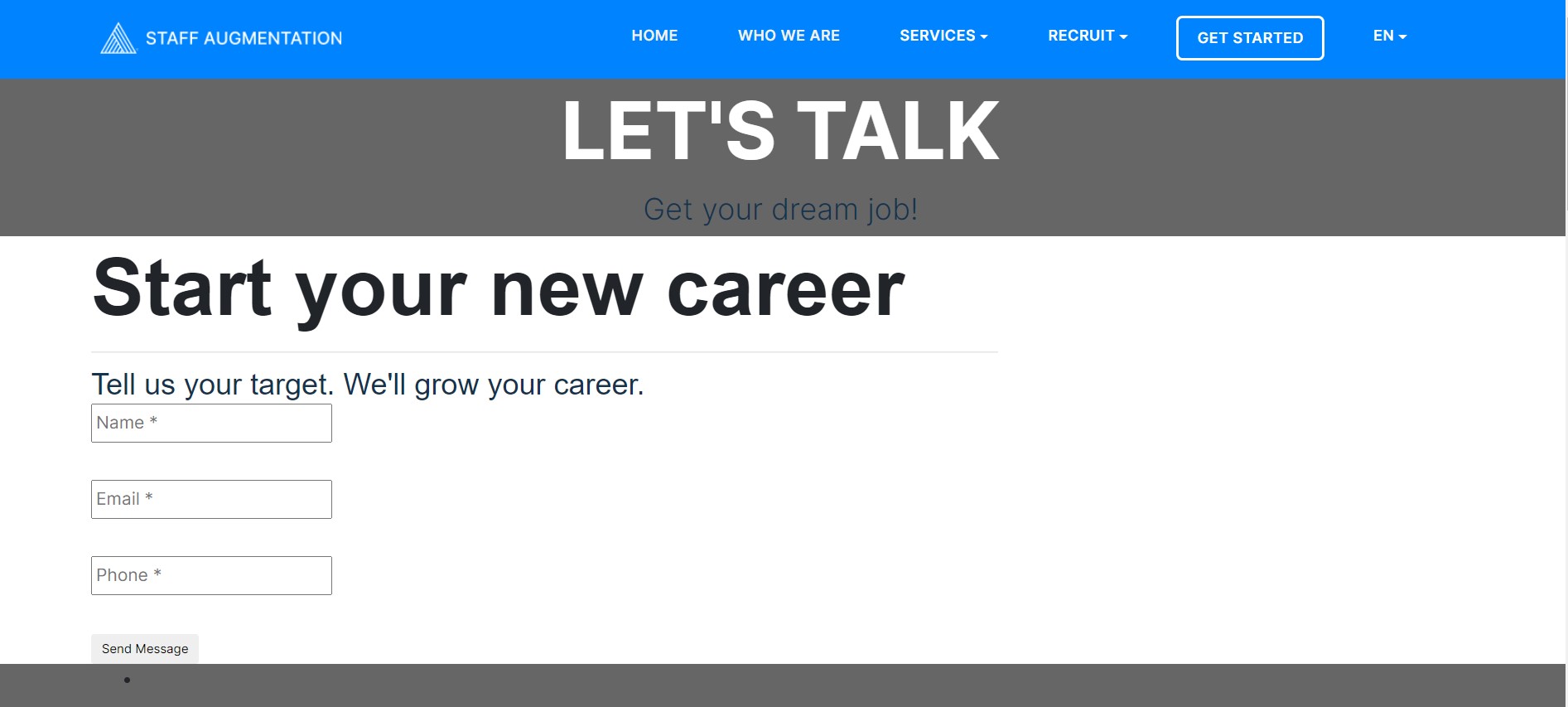The need to increase your team is a great sign. Your business is going in the right direction, and you are growing. The only slight negative is that you know the recruitment process is unlikely to be an easy one. Fortunately, with the help of today’s technology, you are able to step away from traditional recruiting methods to find a solution that matches your unique business needs.
We are going to consider the advantages and disadvantages of two popular recruiting solutions, Staff Augmentation and Upwork.
What Is Staff Augmentation?
Staff Augmentation is a global Swiss staffing company that works at providing highly skilled programming professionals to companies in need of the latest tech expertise. Since 2008, Staff Augmentation has been retaining developers who specialize in mobile development, JavaScript, CMS, eCommerce, and backend development. This can include iOS, Android, Magneto, PHP, Joomla, and more.
The company provides an outsourcing strategy so that companies can take advantage of scalable options to meet business objectives. The team considers the current staff working within the team or on a particular project and then helps to create a plan that will add skill and value to the project. They do so by concentrating on sourcing talent in 4 core areas:
- Mobile Developers- Our candidates must be able to prove competence in their field, which could be Android, Ionic, iOS, Java, React Native, Unity, and Xamarin.
- JavaScript Developers- Staff Augmentation has excelled in creating international relationships with certified JavaScript developers. Our specialties include Angular JS, Aurelia, Backbone JS, Typescript, Vue JS, Ionic, Electron, Ember JS, Meteor, Node JS, React, and React Native.
- CMS & eCommerce Developers- If your business requires any of the following services, Staff Augmentation can provide BigCommerce, Concrete5, Drupal, Expression Engine, Joomla, Magento, Open Cart, Presta Shop, Shopify, Typo3, WooCommerce, and WordPress.
- Backend Developers- The screened candidates are fluent in ASP.Net, C#, Erlang. Java, PHP, Python, and Ruby on Rails.
All of the developers at Staff Augmentation are required to complete on-going studies, so the company prescreens candidates extensive testing to confirm the level of skills. The majority of candidates have a bachelor’s or master’s degree in Computer Science.
Staff Augmentation offers a complete range of services, including corporate relocations, consulting, managed services, strategic staffing, and permanent placement. And it’s not just a case of finding your developer, and that’s it. Staff Augmentation provides ongoing support to help establish relationships and improve retention while saving time and money.
What Is Upwork?
Upwork is another freelance website that originated in America. It came about after the merge of Elance (1999) and oDesk (2003) in 2018. It is the largest freelance marketplace in the world, with 18 million registered freelancers and 5 million registered clients. Each year, an average of three million jobs are posted on Upwork worth more than $1 billion.
There is a wide range of categories for job listings on Upwork, from creative writing to teaching. The categories include website development, software development, mobile development, IT & Networking, and Data Science & Analytics for IT specialists.
Clients and candidates sign up for an account. A client can post a job advert on the platform and send invitations to candidates that meet the requirements. Or, from the candidate’s point of view, they can search for relevant jobs and apply by using their connects. Both clients and candidates need to work to build up their profile and ranking by providing and quality services and receiving reviews.
Upwork is a speedy way to hire someone, and there is an impressive number of talented freelancers on the site. It is also true that the rates are often quite low, so companies can save a lot of money. The fees, however, are quite frustrating. Clients pay around 3% for each contract, and candidate pay 20% per job for the first $500 with one client, after that it drops to 10%, but that is still quite a lot.
In 2019, Upwork made some significant changes to improve the standards of freelancers. They did this by stopping the free connects a candidate received each month. Doing so meant that you would only be able to apply for jobs if you paid a small fee for your connects, and with the competition for jobs being high, it meant that only those with top-rated profiles were getting hired.
In Conclusion
Despite the fees, Upwork is still a cost-effective option for companies to find the talent they need. But there is little involvement from the Upwork team. The chances are you will receive hundreds of applications, and screening candidates is going to be up to you—which may take time. Even then, there is no guarantee that your hire has the right skill sets. Staff Augmentation takes a lot of the hard work off your hands and provides candidates with the perfect skill sets. This can prevent making a wrong hire and saving you time and money.





